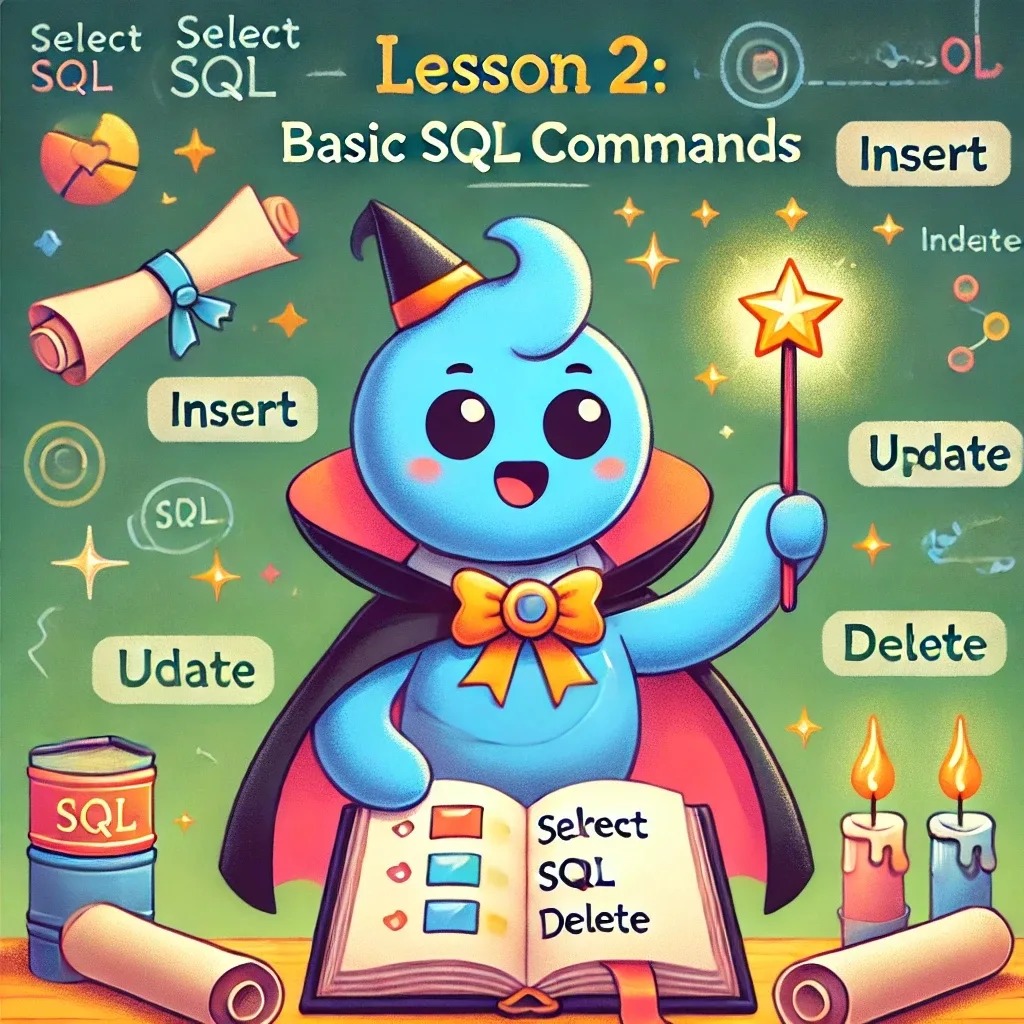
Lesson 2: Speaking the Language of Databases — Basic SQL Commands
Welcome back, aspiring data sorcerer! Now that your PostgreSQL kingdom is up and running, it’s time to learn how to talk to your data. And no, I don’t mean whispering sweet nothings to your tables—although, if that helps, go for it. Today, we’re diving into the basics of SQL, the language that lets you command your databases with precision (and maybe a bit of flair).
What Is SQL?
SQL (pronounced “sequel” or “S-Q-L,” depending on how pedantic you want to sound) stands for Structured Query Language. It’s the go-to language for interacting with relational databases. Imagine SQL as the Google Translate for talking to your data. Want to pull out all the rows from a table? SQL’s got your back. Want to add, delete, or modify information? SQL’s like, “Say no more!”
In short, if PostgreSQL were your obedient minion, SQL would be the magical scrolls that let you issue commands.
Basic SQL Commands: The Building Blocks
Before we start creating giant, complex queries that look like a mad scientist’s recipe, let’s get comfortable with the basics. Here’s what we’ll be covering today:
- CREATE TABLE: Building a home for your data.
- INSERT INTO: Inviting data to your new home.
- SELECT: Asking for what’s already inside.
- UPDATE: Rearranging the furniture (a.k.a. modifying data).
- DELETE: Politely asking data to leave (with a firm boot).
1. CREATE TABLE
The CREATE TABLE command is your starting point. Think of it like laying the foundation for your castle—without it, your data has nowhere to live.
CREATE TABLE knights (
id SERIAL PRIMARY KEY,
name VARCHAR(100),
quest VARCHAR(255),
favorite_color VARCHAR(50)
);
In this example, we’re creating a table called knights with four columns: id, name, quest, and favorite_color. Notice how we define the data type for each column (e.g., VARCHAR for text fields). The SERIAL PRIMARY KEY for id means that each knight gets a unique ID number, just in case we have to sort them later.
2. INSERT INTO
Now that we have a table, let’s add some knights to it. Use the INSERT INTO command to populate your table with data—like adding names to the guest list of an exclusive party.
INSERT INTO knights (name, quest, favorite_color)
VALUES ('Sir Lancelot', 'Seek the Holy Grail', 'Blue'),
('Sir Galahad', 'Find the Grail', 'Red'),
('King Arthur', 'Rule Camelot', 'Green');
Here, we’re inviting three knights to join our round table. Just remember: with INSERT INTO, you specify the column names first, followed by the values in parentheses.
3. SELECT
Once you’ve filled your table, it’s time to see what’s inside. The SELECT command is like knocking on the door and asking, “Who’s home?”
SELECT * FROM knights;
The * means “select everything,” so PostgreSQL will return all the columns for every knight in your table. If you only want to know their favorite colors (hey, we all have our quirks), you can specify:
SELECT name, favorite_color FROM knights;
Now you’ll see a table with just the names and their associated colors. Simple!
4. UPDATE
Changed your mind about Sir Galahad’s favorite color? No problem! Use the UPDATE command to change existing data, like redecorating a room.
UPDATE knights
SET favorite_color = 'Yellow'
WHERE name = 'Sir Galahad';
The WHERE clause tells PostgreSQL which row to update. Without it, you’ll end up painting the entire castle yellow—which, unless you’re a huge fan of yellow, is probably not what you want.
5. DELETE
Finally, if a knight decides to retire (or you just want to trim down your table), you can use the DELETE command.
DELETE FROM knights
WHERE name = 'King Arthur';
Again, the WHERE clause is crucial. Without it, you’ll delete all your knights. And an empty round table is just… sad.
Putting It All Together
Here’s a quick script to try everything we’ve covered today:
CREATE TABLE knights (
id SERIAL PRIMARY KEY,
name VARCHAR(100),
quest VARCHAR(255),
favorite_color VARCHAR(50)
);
INSERT INTO knights (name, quest, favorite_color)
VALUES ('Sir Lancelot', 'Seek the Holy Grail', 'Blue'),
('Sir Galahad', 'Find the Grail', 'Red'),
('King Arthur', 'Rule Camelot', 'Green');
SELECT * FROM knights;
UPDATE knights
SET favorite_color = 'Yellow'
WHERE name = 'Sir Galahad';
DELETE FROM knights
WHERE name = 'King Arthur';
SELECT * FROM knights;
Try running this script in your PostgreSQL terminal and see the magic unfold!
Recap: What Did We Learn Today?
Today, we covered the basic SQL commands that let you create, modify, and view your data:
CREATE TABLE: Setting up a new table for your data.INSERT INTO: Adding new rows to your table.SELECT: Viewing data in your table.UPDATE: Modifying existing data.DELETE: Removing rows from your table.
What’s Next?
In the next lesson, we’ll dive deeper into the world of Joins and Relationships—how to make your tables talk to each other like old friends. Until then, keep practicing your SQL spells, and remember: with great power comes great responsibility… especially when it comes to the DELETE command!
Ready to dive in? Head over to Lesson 3: Joins and Relationships.
Welcome to the language of databases. May your queries be efficient, and your results be precise!